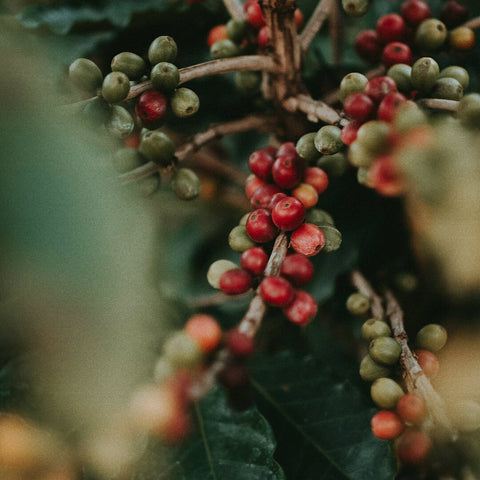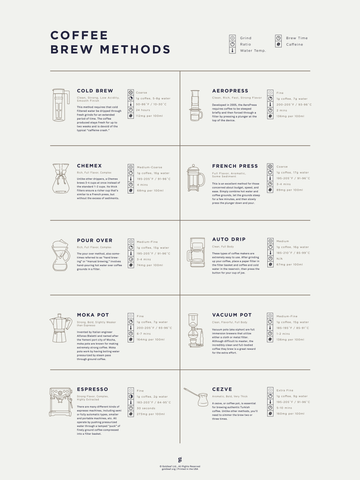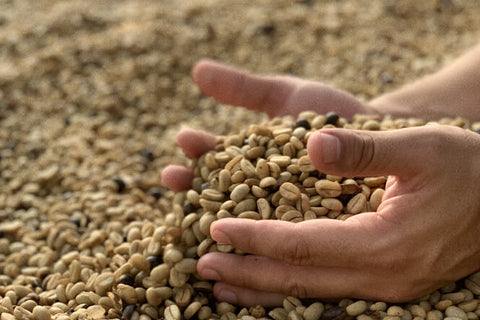How Coffee Beans Make Their Way To Your Home: Follow the Journey From Farm To Cup
Table of Contents
- Introduction
- The Long Global Voyage of Coffee and its Producers
- From Plantation to Harvest: The Art of Coffee Farming
- After Harvesting
- Frequently Asked Questions (FAQs)
- What is the significance of coffee in our daily lives?
- Where does coffee primarily grow, and why is it called the "coffee belt"
- Which countries are major coffee producers in the world?
- What factors contribute to the unique flavors of coffee from different regions?
- How does climate impact coffee flavor profiles?
- What is the difference between Arabica and Robusta coffee?
- What is the journey of a coffee cherry from tree to cup?
- How does fermentation influence coffee flavor?
- What is the significance of washing in coffee processing?
- Why is proper drying crucial in coffee processing?
- How does coffee roasting transform green beans into aromatic coffee?
- How can coffee enthusiasts choose the right grind size for brewing?
- What are the various brewing methods for coffee?
- How does each step in coffee production contribute to the coffee's overall quality?
- What makes coffee production a complex and fascinating journey?
6. Conclusion
Introduction
Coffee, the elixir for the morning routine and the muse for millions of people. It holds a profound place in our daily lives. Beyond its rich aroma and comforting warmth lies an intricate journey from remote coffee farms to your favorite morning mug. This article is a voyage into the world of coffee, exploring not only its origins and flavors but also the sustainability initiatives that are transforming the coffee industry into a force for positive change.
Elevate Your Coffee Experience: Dive deep into the world of coffee with our meticulously designed Coffee Journal. Whether you're a casual coffee lover or a passionate connoisseur, this journal is your essential companion on the path to coffee perfection.
The Long Global Voyage of Coffee and its Producers
Coffee, a tropical treasure cherry, flourishes and grows primarily in countries spanning between the Tropics of Cancer and Capricorn, known as the "coffee belt." Several countries are considered the major coffee producers of the world. These countries are located within the coffee belt, and provide the ideal climate for coffee cultivation. The lush landscapes and varying microclimates within this belt are where coffee plants thrive, each region imparting unique flavors, aromas, and characteristics to the beans they produce. Climate plays an important role in the different profiles of coffee.
Here are some of the top coffee-producing countries:- Brazil: Brazil consistently ranks as the world's largest coffee producer. It is known for both Arabica and Robusta coffee production and produces a wide range of coffee varieties.
- Vietnam: Vietnam is a significant coffee producer, primarily known for its Robusta coffee. It has rapidly grown as a coffee exporter in recent years.
- Colombia: Colombia is renowned for its high-quality Arabica coffee. It is one of the largest producers of washed Arabica beans, which are known for their bright acidity and balanced flavors.
- Ethiopia: Ethiopia is often considered the birthplace of coffee. It produces a diverse range of coffee varieties, each with unique flavors and characteristics.
- Honduras: Honduras is a major coffee producer in Central America, known for its Arabica coffee. The country has made significant strides in improving coffee quality and sustainability.
- Peru: Peru is known for its organic coffee production. It has gained recognition for its commitment to sustainable and environmentally friendly coffee farming practices.
- Mexico: Mexico is a significant producer of Arabica coffee, particularly in the southern states of Chiapas and Oaxaca. Mexican coffee is known for its mild and well-balanced flavors.
- Guatemala: Guatemala produces high-quality Arabica coffee with distinct regional flavors. It is often recognized for its complex and bright coffees.
- Costa Rica: Costa Rica is known for its Arabica coffee, which is celebrated for its clean and bright cup profiles. The country has a strong focus on sustainable coffee practices.
- Nicaragua: Nicaragua is an emerging coffee producer known for its Arabica beans. It has gained recognition for its specialty coffee offerings.
- Uganda: Uganda is a major coffee producer in Africa, with a focus on Robusta coffee. It has a growing specialty coffee sector.
- India: India produces both Arabica and Robusta coffee, with notable coffee regions like Karnataka and Kerala. Indian coffee is known for its unique flavors.
These countries play a pivotal role in the global coffee industry, contributing to the rich tapestry of coffee flavors and varieties enjoyed by coffee enthusiasts worldwide.
From Plantation to Harvest: The Art of Coffee Farming
Coffee farming is a labor of love. It begins with the careful planting of coffee saplings, nurtured under the watchful gaze of the sun and rain. Typically, coffee cherries start as small, green, and hard when they first appear on the tree.As they mature, they undergo a series of color changes, transitioning from green to yellow, then to orange or red, depending on the coffee variety. 
The time it takes for a coffee cherry to mature and become ready for harvesting can vary depending on several factors:
- Coffee Variety: Different coffee varieties have varying maturation periods. For example, Arabica coffee typically takes longer to mature than Robusta coffee.
- Altitude: Coffee grown at higher altitudes tends to have a slower maturation process due to cooler temperatures. This can result in a longer maturation period but may contribute to more complex flavors.
- Climate: Climate conditions, including temperature and rainfall patterns, can affect the rate of cherry maturation. Consistent and favorable climate conditions can lead to more predictable maturation timelines.
- Region: The specific coffee-growing region can influence maturation times. Some regions have distinct microclimates that impact the coffee's development.
- Cultivation Practices: Proper cultivation practices, such as adequate fertilization, pruning, and disease control, can help ensure that coffee cherries mature on schedule.
- Harvesting Practices: Harvesting cherries at their peak of ripeness contributes to better coffee quality. Cherries that are harvested too early or too late can affect the flavor profile.

The transformation from cherry to bean is a meticulous process. Pulping, fermentation, drying, and milling are the steps that bring out the unique flavors and aromas that coffee lovers cherish. It's here that the alchemy of coffee takes place, with each method and timing influencing the final cup. As the cherries ripen, skilled hands pick them with precision, ensuring only the finest beans make their way to the processing stage. This harmonious relationship between nature and farmer is the foundation of exceptional coffee.
A Visual Journey Through Coffee's Origins: Our captivating Coffee Family Tree print takes you on a visual journey through the intricate roots of your favorite morning brew. Discover the diverse and fascinating family tree of coffee, tracing its origins from ancient Ethiopia to its global presence today.
After Harvesting
After the coffee cherries are harvested, they undergo several crucial processing steps before becoming the coffee beans that eventually reach your cup. Here's a brief overview of what happens next in the coffee production process:
- Depulping: The first step is to remove the outer pulp of the coffee cherries. This is typically done using a de-pulping machine. Once depulped, the beans are still covered in a sticky layer called mucilage.
- Fermentation: The depulped beans, along with the mucilage, are then fermented. This process can take several hours or even days, depending on the specific method used. Fermentation helps break down the remaining mucilage and can influence the flavor profile of the coffee.
- Washing: After fermentation, the beans are thoroughly washed to remove any remaining mucilage. This washing process helps clean the beans and prepare them for drying. Some coffee processing methods skip the washing step, leading to different flavor profiles (e.g., "natural" or "dry-processed" coffee).
- Drying: The washed beans are spread out to dry. This can be done under the sun on large patios or using mechanical dryers. Proper drying is essential to prevent mold or other defects and to preserve the coffee's quality.
- Milling: Once the beans are dried to the ideal moisture content, they are hulled and polished to remove the outer layers. This reveals the green coffee beans inside.
- Grading and Sorting: The green coffee beans are sorted based on size, weight, and density. This step helps ensure consistent quality and flavor in the final product.
- Bagging and Export: The sorted green coffee beans are then bagged and prepared for export. They are often shipped in large sacks to coffee roasters around the world.
- Roasting: Upon reaching the coffee roastery, the green coffee beans are roasted to develop their unique flavor profiles. Roasting is a critical step in the process, as it transforms the green beans into the aromatic brown coffee beans we are familiar with.
- Grinding: Roasted coffee beans are ground to the desired consistency just before brewing. The grind size can vary depending on the brewing method you plan to use.
-
Brewing: Finally, the ground coffee is brewed into your favorite cup of coffee using methods such as drip brewing, espresso, French press, pour-over, or other techniques.
Checkout our Coffee Brewing Methods Print to see all of the different ways you can brew your coffee.

Each of these steps plays a significant role in shaping the flavor, aroma, and overall quality of the coffee. The journey from cherry to cup is a complex and fascinating one, and each step is executed with precision and care by coffee producers and enthusiasts around the world
Frequently Asked Questions (FAQs)
- What is the significance of coffee in our daily lives?
- Coffee is more than just a beverage; it's an integral part of daily routines for millions worldwide, offering rich aroma and comforting warmth.
- Where does coffee primarily grow, and why is it called the "coffee belt"?
- Coffee flourishes in countries between the Tropics of Cancer and Capricorn, known as the "coffee belt." These regions provide the ideal climate for coffee cultivation.
- Which countries are major coffee producers in the world?
- Some top coffee-producing countries include Brazil, Vietnam, Colombia, Ethiopia, Honduras, Peru, Mexico, Guatemala, Costa Rica, Nicaragua, Uganda, and India.
- What factors contribute to the unique flavors of coffee from different regions?
- The varying microclimates, altitudes, and cultivation practices within the coffee belt regions contribute to the distinct flavors and characteristics of coffee from each area.
- How does climate impact coffee flavor profiles?
- Climate conditions, such as temperature and rainfall patterns, influence the rate of coffee cherry maturation, affecting flavor development.
- What is the difference between Arabica and Robusta coffee?
- Arabica coffee is known for its longer maturation period and nuanced flavors, while Robusta coffee has a shorter maturation period and tends to have a stronger, more robust taste.
- What is the journey of a coffee cherry from tree to cup?
- The coffee cherry undergoes stages like depulping, fermentation, washing, drying, milling, grading, sorting, bagging, roasting, grinding, and brewing before reaching your cup.
- How does fermentation influence coffee flavor?
- Fermentation breaks down mucilage and can affect the coffee's flavor profile, imparting unique characteristics.
- What is the significance of washing in coffee processing?
- Washing helps clean the beans after fermentation and prepares them for drying, impacting the coffee's final flavor.
- Why is proper drying crucial in coffee processing?
- Proper drying prevents defects and preserves coffee quality by ensuring the right moisture content.
- How does coffee roasting transform green beans into aromatic coffee?
- Roasting is a critical step where green coffee beans develop their unique flavor profiles and turn into aromatic brown coffee beans.
- How can coffee enthusiasts choose the right grind size for brewing?
- Grind size selection depends on the chosen brewing method, with different methods requiring specific grind sizes for the best results.
- What are the various brewing methods for coffee?
- There are multiple brewing methods, including drip brewing, espresso, French press, pour-over, and more, each offering unique coffee experiences
- How does each step in coffee production contribute to the coffee's overall quality?
- Every step, from cherry maturation to brewing, plays a vital role in shaping the coffee's flavor, aroma, and quality.
- What makes coffee production a complex and fascinating journey?
- The journey from cherry to cup involves precision and care at each stage, resulting in the diverse and beloved world of coffee enjoyed by enthusiasts globally.
Conclusion
The journey of coffee from farm to cup is a mesmerizing tale filled with rich flavors, fascinating cultural traditions, and inspiring sustainability initiatives. Next time you savor that aromatic cup, take a moment to appreciate the hard work of the farmers and the positive impact you're contributing to through your choice of coffee.
Unique Gifts: Searching for the perfect holiday gift for a coffee lover? Look no further. Our coffee collection includes unique and thoughtful gifts that celebrate the love of coffee, from beautiful prints to informative journals.




